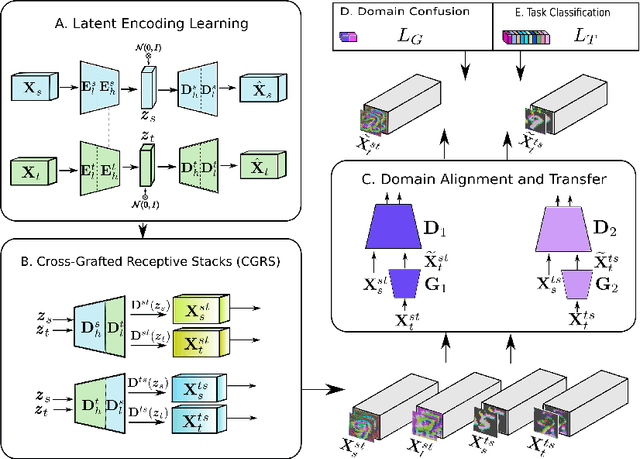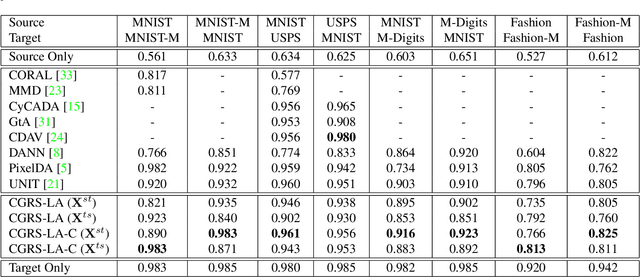Unsupervised Domain Adaptation using Deep Networks with Cross-Grafted Stacks
Paper and Code
Mar 25, 2019



Current deep domain adaptation methods used in computer vision have mainly focused on learning discriminative and domain-invariant features across different domains. In this paper, we present a novel approach that bridges the domain gap by projecting the source and target domains into a common association space through an unsupervised ``cross-grafted representation stacking'' (CGRS) mechanism. Specifically, we construct variational auto-encoders (VAE) for the two domains, and form bidirectional associations by cross-grafting the VAEs' decoder stacks. Furthermore, generative adversarial networks (GAN) are employed for label alignment (LA), mapping the target domain data to the known label space of the source domain. The overall adaptation process hence consists of three phases: feature representation learning by VAEs, association generation, and association label alignment by GANs. Experimental results demonstrate that our CGRS-LA approach outperforms the state-of-the-art on a number of unsupervised domain adaptation benchmarks.
 Add to Chrome
Add to Chrome Add to Firefox
Add to Firefox Add to Edge
Add to Edge